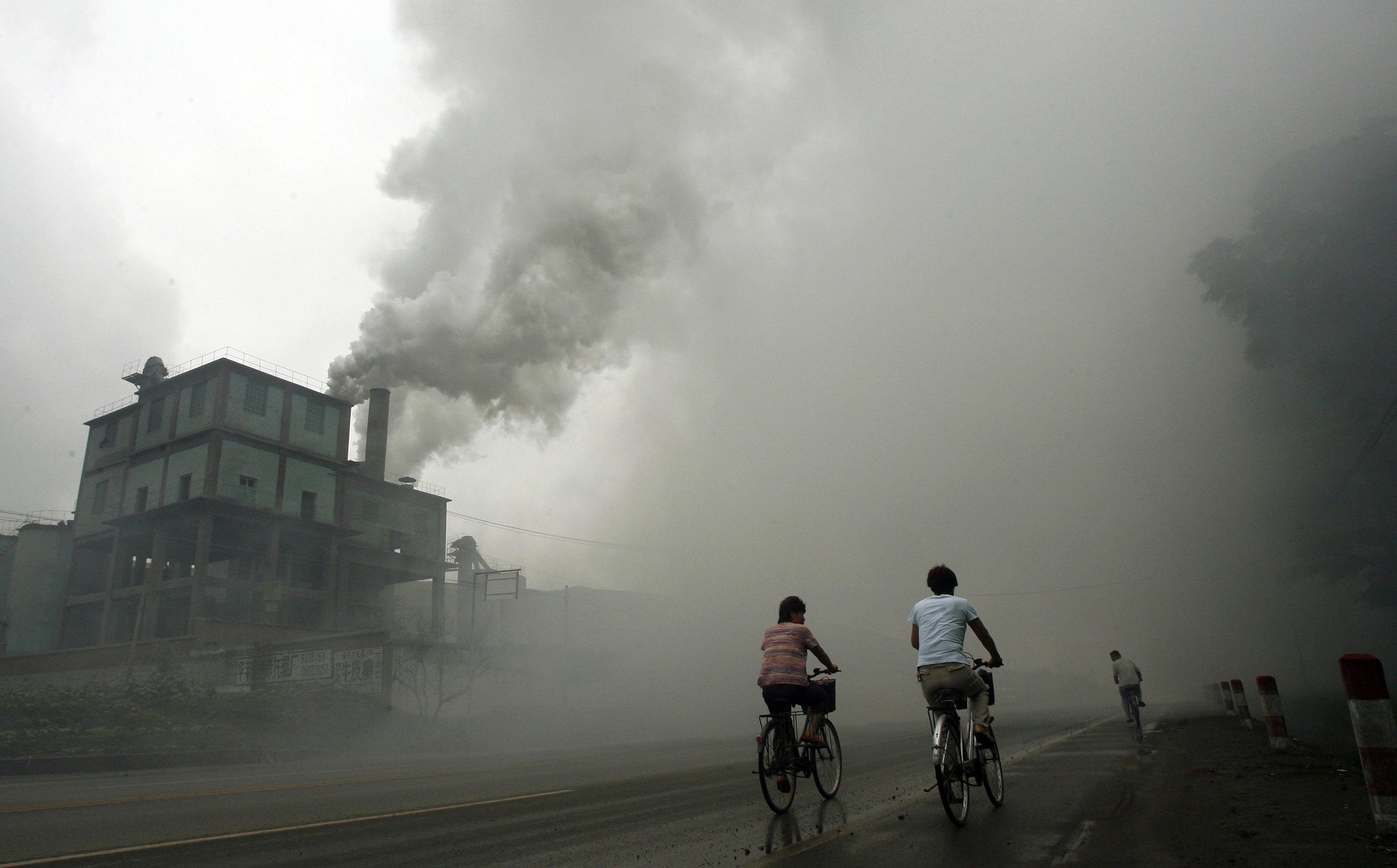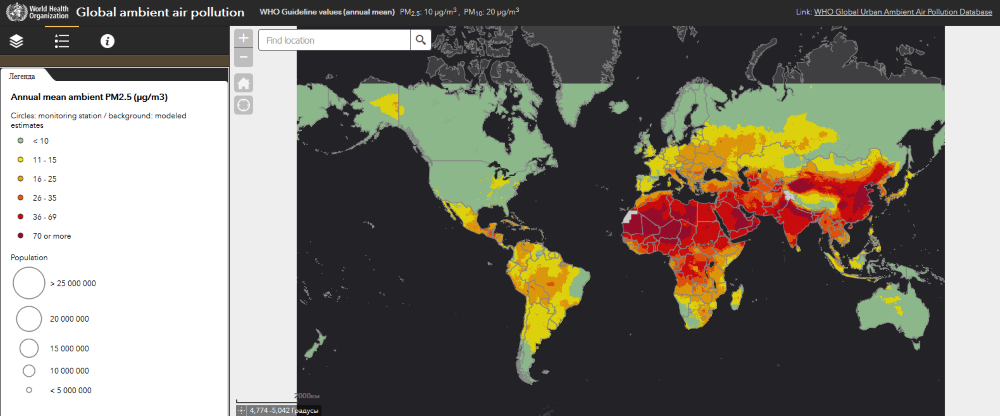News about maps
Digital cartography and GPS navigation
Mapstor news
This Day in History
Travelling with mapstor.com
Digital cartography and GPS navigation
115 years of flight
Next-generation of GPS satellites are headed to space
DJI Phantom 4 RTK - cartography of a new generation
Earthquake prediction systems
OneSoil map
Updated map of air pollution - 92% of the population breathes polluted air

The World Health Organization (WHO) has established updated map of air pollution on Earth. According to this map, the vast majority of people live in areas with access of air pollution. "New WHO model allows us to see the countries with dangerous sources of air pollution, as well as provides a measure to combat these sources," – says Flavia Bustreo, Director General of WHO.
Interactive map also shows the connection between the level of air pollution and population health in different countries. Was created a model based on data from satellites and ground stations monitoring air quality. These stations are located in the areas of settlements and outside urban areas. When implementing the project, researchers used information obtained from about 3000 such stations. The work was conducted in collaboration with the University of Bath, UK.


According to WHO, about 3 million people a year die due to various diseases related to air pollution. Approximately 90% of these deaths occur in low- and middle-income countries. 2/3 of the deaths relate to the South-East and East Pacific. 94% of deaths are associated with non-communicable diseases such as cardiovascular disease, lung cancer and other. Air pollution increases the number of cases of non-lethal diseases such as respiratory diseases.
Atmospheric pollution sources are divided into:
1. Natural - pollutants of mineral, microbial or plant origin.
2. Artificial are divided into several groups:
- Transportation - all pollutants that get into the atmosphere as a result of road, rail, air, sea and river transport modes;
- Production - this pollutants are the products of technological processes or heating. Burning coal, cement production and the smelting of iron, for example, give the total emission of dust into the atmosphere, equivalent to 170 million tons per year;
- Household - everything that is connected with the burning of fuel in the houses, and waste.
Anthropogenic (artificial) sources of pollution are divided into several groups:
- Mechanical pollutants - different fractions of particulate matter. These are cement, ash particles, etc.
- Chemical contaminants - gaseous or dust-like substance which can enter into chemical reactions;
- Radioactive contaminants.
A map built by WHO is interactive. It allows us to study air pollution in different regions. One can study the level of air pollution in more than 3,000 cities.
Digital cartography and GPS navigation 03-10-2016



